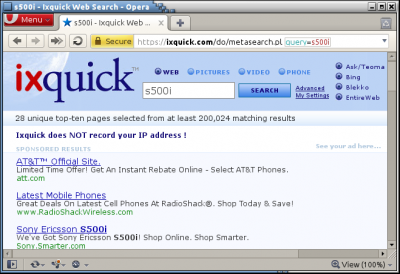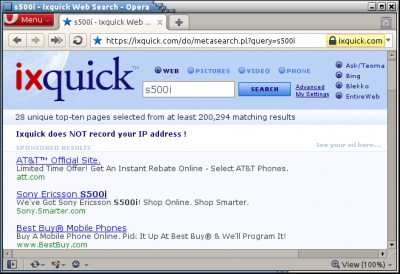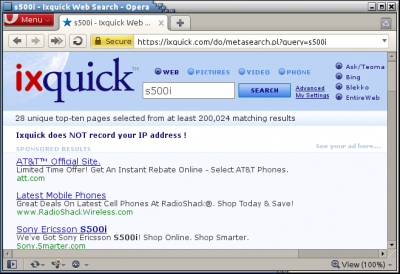Opera 11 Addressbar Revisited
I already wrote down some thoughts about the addressbar changes in Opera 11 a few days ago, and it got me thinking that the addressbar could definitely be improved, just not by detracting from it.
To cut to the chase, here’s the addressbar I’m envisioning:
What you see on this screenshot, however, does not tell the whole story. Let’s start with what’s visible:
- The protocol is grayed out. This is the method that most so-called URL highlighting uses to emphasize the domain. I think this is the wrong approach, but in the case of the protocol it seems the right thing to do. It is somewhat hidden, but still fully visible: no need to select the addressbar to find out what protocol is being used. People know that something is a web address when they see it in print thanks to the protocol, even if they have no idea what it means (and in fact many might mistakenly interpret HTTPS as safe), and combined with the large, clear button indicating security information you’d really have to try to misinterpret HTTPS as safe.
- The domain is highlighted, specifically by bolding in this example, but it could also be done through underlining, a background color, or a combination of various things. The important part is that the domain is highlighted, rather than the rest of the URI lowlighted.
- Query strings have parameter highlighting, and characters that separate parameters like ? and & are hidden and replaced by a small outline indicating what goes with what. The space between the various parameters corresponds to the size of the hidden ? or & characters and thus no shifting will occur when selecting them. I did not look into things like color blindness and the colors I used are solely for illustration purposes; they are no suggestion for specific colors.
Then, what’s not visible:
- Complex query strings, meaning with 3 or 4 parameters or more, could be hidden from that point on, but this should be visibly indicated. An ellipsis is the standard method of conveying such information, so there’s no need to come up with something fancy. A complex query string like Google’s would thus look something like http://www.google.be/search [client=opera] [rls=en] [q=test]…
Perhaps the number of parameters before hiding occurs should be configurable as well.
This hiding should not affect links to IDs like #someID, which are hidden along with the query string at the moment.
- Linkify URI segments on hover when a modifier key, such as Ctrl or Shift, is pressed. This has been implemented quite nicely by the Firefox extension Locationbar².
That’s about it for my proposal regarding how to truly upgrade the addressbar as opposed to trying to make it little more than a domain display.



